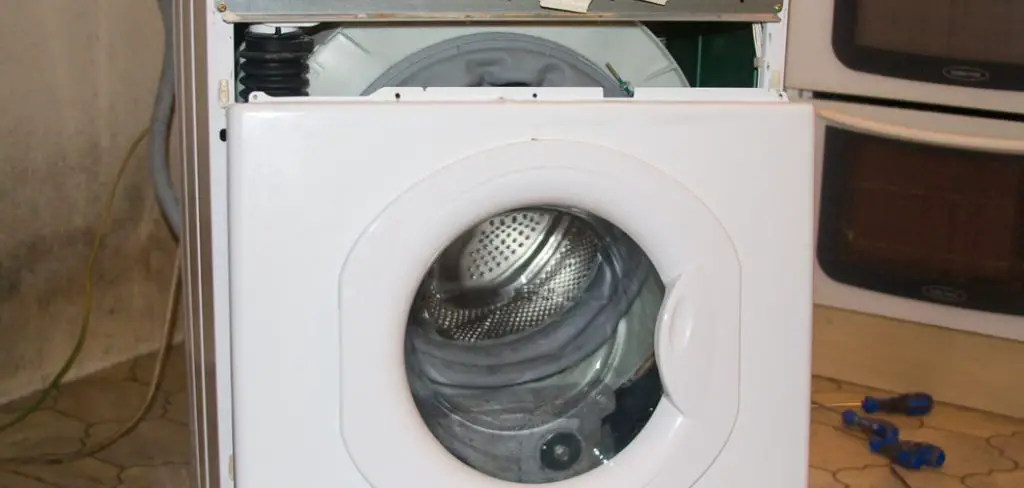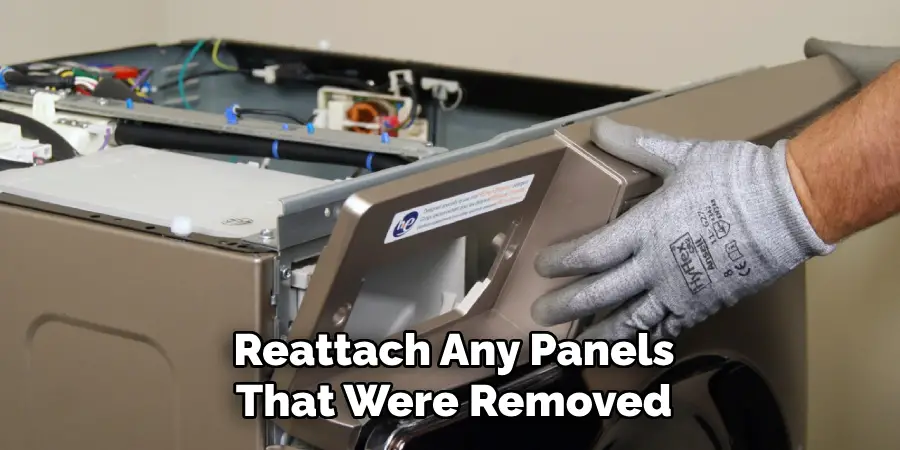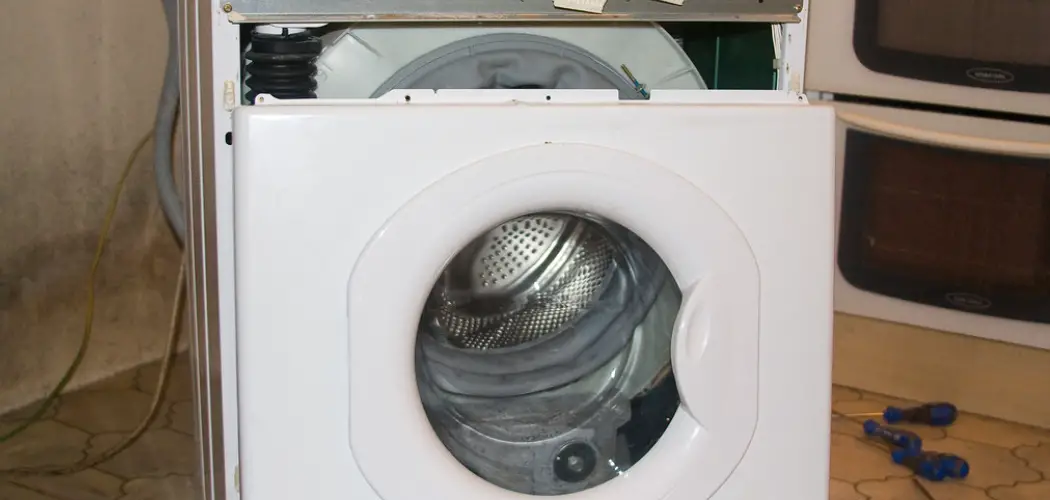A malfunctioning washing machine drum can disrupt your laundry routine, leaving clothes unwashed or trapped inside the appliance. Understanding the basics of how to fix a washing machine drum can save time and expense.

This guide on how to fix washing machine drum will walk you through common issues that might cause the drum to stop spinning or make unusual noises and provide step-by-step instructions on how to address these problems safely and effectively.
Whether it’s due to a minor obstruction or a more complex mechanical issue, you’ll gain the knowledge to tackle repairs confidently and get back to hassle-free laundry days.
Why Is the Washing Machine Drum Not Spinning?
Before diving into how to fix a washing machine drum, it’s important to understand why the drum may not be spinning. This will help you identify and troubleshoot the issue more efficiently.
Power Issues:
First, check that your washing machine is receiving power. A tripped circuit breaker or blown fuse could be the culprit. Also, make sure the machine is plugged in securely and that there are no loose connections.
Obstructions:
Another common cause of a non-spinning washing machine drum is an obstruction. Objects such as coins, small articles of clothing, or even excess detergent can get caught between the drum and the tub. This not only prevents the drum from spinning but can also damage the appliance if left unaddressed.

Faulty Lid Switch:
Many modern washing machines have a lid switch that acts as a safety measure to prevent injury while the machine is in use. If this switch becomes faulty, it can stop the drum from spinning. Check if your lid switch is working properly by manually pressing down on it while the machine is running. If the drum starts spinning, then your lid switch may need to be replaced.
Drive Belt:
A worn or broken drive belt can also cause issues with the washing machine drum. This rubber belt connects the motor to the drum and helps it spin. If you notice a burning smell coming from your machine or see that the drum is not moving at all, it could indicate a problem with the drive belt.
8 Simple Step-by-step Guidelines on How to Fix Washing Machine Drum
Step 1: Unplug the Machine
Before beginning any repair work, ensure your safety by unplugging the washing machine from the power outlet. This step is crucial to prevent any risk of electrical shock while you inspect or repair the drum. Double-check that the machine is completely disconnected from any power source before proceeding to the next steps.
It’s also a good idea to turn off the water supply and disconnect the hoses to prevent any potential water damage.
Step 2: Remove Obstructions
If you suspect an obstruction is causing the drum not to spin, carefully remove any visible objects from between the drum and tub. Use a flashlight to get a better view if necessary. It’s important to take caution while doing this as some objects may be sharp or heavy, and could cause injury.
You can also use a wire hanger or long pliers to reach and remove any objects that may be stuck in the drum.

Step 3: Inspect the Lid Switch
If you suspect a faulty lid switch, remove the top panel of your washing machine following the manufacturer’s instructions. Locate the lid switch and inspect it for any signs of damage or wear. If it appears damaged, you will need to replace it with a new one.
But before replacing the lid switch, try cleaning it with a damp cloth and see if that resolves the issue. Sometimes, dirt or debris can build up on the switch and affect its functionality.
Step 4: Check the Drive Belt
To access the drive belt, you will need to remove the back panel of your washing machine. Once removed, check if the belt is intact and properly attached to both the motor and drum pulleys. If it appears worn out or broken, you will need to replace it with a new one.
It’s also a good idea to check the tension of the drive belt. If it feels loose, you may need to adjust it or replace it with a new one.
Step 5: Replace Damaged Parts
If you have identified any damaged or faulty parts such as the lid switch or drive belt, now is the time to replace them. Consult your washing machine’s manual for specific instructions on how to remove and install these parts.
Make sure to use the correct replacement parts recommended by the manufacturer for optimal performance and safety.
Step 6: Reassemble and Test
Once all necessary repairs have been made, reattach any panels that were removed and restore power to the washing machine. Run a test cycle to ensure that the drum is spinning properly and there are no unusual noises or issues.

If the problem persists, it may indicate a more complex mechanical issue that requires professional assistance.
Step 7: Clean the Drum
To prevent future issues with your washing machine drum, it’s essential to keep it clean. Over time, dirt, lint, and detergent residue can build up inside the tub and affect its performance. Use a mixture of warm water and vinegar to clean the drum thoroughly. You can also use a specialized washing machine cleaner for optimal results.
It’s also a good idea to regularly clean the lint filter and drain pump to prevent clogs.
Step 8: Regular Maintenance
To ensure your washing machine continues to operate smoothly and prevent the drum from encountering future issues, implementing a regular maintenance routine is essential. Begin by routinely inspecting the hoses for any signs of wear or leaks, and replace them as needed to avoid water damage. Regularly check and clean the lint filter and drain pump to prevent blockages that can impede the machine’s performance.
Additionally, keep the exterior and interior of the washing machine clean by wiping them down and running a cleaning cycle with vinegar or a specialized cleaner once a month. These proactive measures will not only extend the life of your washing machine but also ensure your laundry tasks remain hassle-free.
Following these simple steps and guidelines on how to fix washing machine drum can help you fix a non-spinning washing machine drum without having to call in a professional. Remember to always prioritize safety and consult the manufacturer’s manual for specific instructions before attempting any repairs on your own.
Frequently Asked Questions
Q: How Do I Know if My Washing Machine Drum is Faulty?
A: If your washing machine is not spinning or making unusual noises, it could indicate a problem with the drum. Other signs include burning smells and visible damage to the drum. It’s important to inspect and assess the issue before attempting any repairs.
Q: Can I Repair My Washing Machine Drum on My Own?
A: Minor issues with the washing machine drum can be fixed by following our step-by-step guidelines. However, if you are not familiar with repairing appliances or encounter complex issues, it’s best to seek professional help to avoid further damage or injury.

Q: How Often Should I Clean My Washing Machine Drum?
A: It is recommended to clean your washing machine drum at least once a month to prevent build-up of dirt and residue that can affect its performance. Regularly cleaning the lint filter and drain pump is also essential for optimal functioning. Remember to always refer to the manufacturer’s manual for specific maintenance guidelines.
Q: What Should I Do if My Washing Machine Drum is Still Not Spinning After Following These Steps?
A: If the issue persists after following these steps, it may indicate a more complex mechanical problem that requires professional assistance. It’s best to seek an expert technician who can diagnose and repair the issue for you.
Q: How Can I Prevent Future Issues with My Washing Machine Drum?
A: Regular maintenance, such as cleaning the drum and parts, inspecting for wear or leaks, and following proper usage guidelines, can help prevent future issues with your washing machine drum. It’s also important to address any minor issues promptly before they turn into bigger problems. Always consult the manufacturer’s manual for specific maintenance tips and guidelines.
Conclusion
Maintaining the smooth operation of your washing machine requires a hands-on approach to addressing any issues as they arise, particularly those affecting the drum’s functionality. By systematically inspecting components such as the lid switch, drive belt, and any possible obstructions, you can often identify and resolve common problems without professional intervention.
Regular cleaning and maintenance are crucial to prevent future malfunctions and extend the life of your appliance. However, it’s essential to recognize when a problem might exceed typical troubleshooting and require expert attention. By following these guidelines on how to fix washing machine drum, you can ensure your washing machine remains a reliable asset in your home, efficiently handling all your laundry needs.
Check it out to Refluff Squishmallows
About
Angela is the chief editor of Indoorense. She began her career as an interior designer before applying her strategic and creative passion to lifestyle and home.
She has close to 15 years of experience in creative writing and online content strategy for housekeeping and cleaning,home decorations as well as other efforts.
She loves her job and has the privilege of working with an extraordinary team. She lives with her husband, two sons, and daughter in Petersburg. When she’s not busy working she spent time with her family.

